
It has been said many times before in Mental Elf blogs, that we badly need well researched and effective treatments for depression. What’s more, there is demand for a variety of treatments because effective interventions such as antidepressants and various psychotherapies don’t work or aren’t acceptable to everyone.
The study I am appraising today comes from Sweden and was published in the Open Access journal PLoS One. The researchers were trying to establish whether a blended smartphone-supported course of behavioural activation treatment was non-inferior to a “full” course of behavioural activation treatment.
Behavioural activation focuses on activity scheduling to encourage people with depression to approach activities that they are avoiding and on analysing the function of cognitive processes (e.g. rumination) that serve as a form of avoidance (Veale, 2007).
This new study aims to answer what is a topical question, considering how we can harness technology in healthcare and whether technology-supported treatments, which involve less cost, can be as effective as traditional treatment modalities.
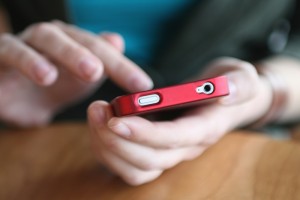
Recent research has shown how behavioural activation can be delivered via smartphones.
Methods
Participants were recruited by self-referral through advertisements in Swedish newspapers and the study was then conducted at three clinical settings in Stockholm and Linkoping.
Participants had to be at least 18 years old, have a score of at least 5 on the PHQ-9, and suffer from major depressive disorder.
Participants were excluded if they were currently undergoing a similar psychological treatment, had severe psychiatric comorbidities that might interfere with the treatment or other primary medical problems, severe alcohol problems, or a risk of suicide.
In total, 93 people entered the trial. There were 46 people in the blended treatment condition and 47 in the full treatment condition.
Treatments
The aim of the study was to compare:
- “Full treatment” (10 weeks): A manualised ten-session behavioural activation treatment.
- “Blended treatment” (9 weeks): A smartphone-supported version of behavioural activation treatment, which had only four face-to-face sessions that took place every other or third week and included a smartphone app that the participants could use between the sessions.
Behavioural activation is a psychological approach which focusses on replacing “depressed” behaviours with “non-depressed”, i. e. healthy behaviours. The main purpose of the smartphone app was to give participants a way of scheduling and logging non-depressed activities each day.
The paper describes in some detail how the treatment was modified for the blended version:
- Participants and therapist created an activity plan in the first face-to-face session.
- Participants were then given access to a smartphone application which allowed them to log non-depressed behaviour every day. This app included a database with different activities for patients to choose from.
- Therapists had access to the application’s back-end system which allowed them to see participants’ activities and comments
- Therapists also used the system to send the participants personalised messages every other or third day as well as weekly general educational messages. This was a one-way communication channel; participants were unable to respond to the messages.
- The participants all used their own smartphones and data plans.
The primary outcome was the participant’s score on the BDI-II (Beck Depression Inventory). Secondary outcome measures included the PHQ-9 (Patient Health Questionnaire Depression Scale), the BAI (Beck Anxiety Inventory), the Acceptance and Action Questionnaire (AAQ-II), and the QOLI (Quality of Life Inventory).
Measures were taken pre-treatment, immediately post-treatment, and at a follow-up point six months after treatment finished. There was no significant difference between groups on any of the measures pre-treatment.
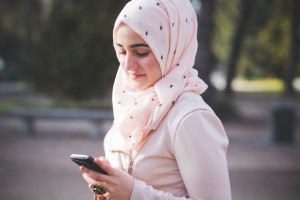
The smartphone app given to trial participants in the blended treatment arm, allowed them to schedule and log non-depressed activities each day.
Results
The study was unable to prove that the blended treatment was non-inferior to the full treatment. Looking at the primary outcome, the BDI-II, the estimated mean difference between treatments was 2.42 with a CI in the range of -2.19 to 7.03 at post-treatment and 0.5 at follow-up (CI -4.93 to 5.92). The study’s cut-off point for non-inferiority was a difference of 2.5, so that means the trial was unable to establish non-inferiority.
Looking at the effectiveness of the interventions, the researchers found that the effect sizes for both treatments were substantial at both time points – i.e. both treatments worked. On average, the BDI-II scores for the blended treatment group decreased from 28.96 to 15.17 with an additional decrease of 0.56 points at follow-up. For the full treatment, scores dropped from 27.32 to 13.68 and remained stable through follow-up (13.43).
The researchers also assessed some secondary outcomes: treatment credibility rating (how credible did participants think the therapy was), working alliance (how well therapist and client are working together on the goals of the therapy), and therapists’ adherence to treatment manuals. They found that there were no significant differences between the groups in any of these.
Cost-effectiveness and therapist time were also considered. For the full treatment, the average therapist time is 600 minutes. For the blended treatment, the time spent in face-to-face sessions was 240 minutes plus time spent in the back-end system. The researchers found a considerable range there: between 24 and 220 minutes. There was no correlation between the time the therapists spent in the back-end system and the participants’ changes on the primary outcome measure. Overall, the average therapist time for the blended treatment was 321 minutes; 47% less than for the full treatment.
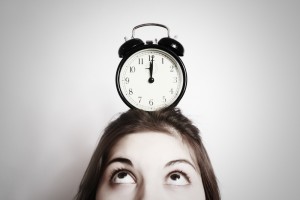
The blended treatment took about half as much time as the full face to face therapy.
Conclusions
While this study was unable to prove that blended treatment was non-inferior, it did show that there was almost no difference between the effect for the primary outcome between two treatment modalities and that the blended treatment has a clinically significant effect. Participants’ depression scores dropped almost as much as with the full ten-session treatment.
The secondary outcomes which were measured reflect a range of clinically important considerations apart from depression scores and included anxiety scores as well as quality of life.
It’s also important to note that both treatment modalities were considered credible and that the working alliance was equally strong for both. I think it’s a strength of this study to have included these measures. Research suggests that working alliance is one of the most important factors in determining the success or failure of a psychological treatment, yet not many trials of psychological treatments include it as a measure.
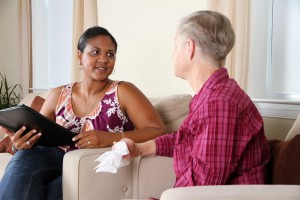
This study is insufficient to conclude that this kind of blended treatment is a cost-effective alternative to regular face-to-face treatment for depression.
Limitations
The study has several limitations, which the researchers mention. In my opinion, the following three are the most important:
- Participants were recruited by means of self-referral. This means that the groups included people who had already received some form of treatment for their depression. Some participants were on antidepressant medication, so that means we can’t be sure how much of the treatment effect was attributable to the psychological intervention. Half of all participants had undergone psychological treatment in the past. It would have been interesting to see if this made a difference to their outcomes as compared to people who had never undergone psychological treatment.
- There was no attention control group. We have blogged about attention control before on The Mental Elf. The absence of an attention control group means that regression to the mean (people getting better by themselves) could be an explanation for some or all of the treatment effects.
- The sample size was very small, so generalising the results is difficult. Also, if there are smaller effect differences between the treatments, they can only be detected with a larger sample.
Obviously, the intervention would also only be beneficial to people who own smartphones and are comfortable using them.
In the context of the study, it looks like the blended treatment could be as effective as the full treatment while only taking half the time and cost. A larger trial would be needed to have more robust data on this; as mentioned, it is quite difficult to generalise these results due to the limitations of the study.
Personally, I am very critical of computerised psychological treatments, but I think this intervention differs from other approaches in that it still involves the therapist in ways they are usually not involved in, for example, computerised CBT. I also think that quite a bit of the success of the treatment depends on the design of the smartphone app itself; more than is perhaps credited.
All in all, given the tentatively promising nature of these results, I think it’s a treatment modality that deserves further investigation.
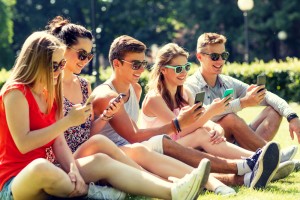
This promising blended treatment for depression certainly warrants further investigation.
Links
Primary paper
Ly KH, Topooco N, Cederlund H, Wallin A, Bergström J, et al. (2015) Smartphone-Supported versus Full Behavioural Activation for Depression: A Randomised Controlled Trial. PLoS ONE 10(5): e0126559. doi: 10.1371/journal.pone.012655
Other references
Ly KH, Trüschel A, Jarl L, Magnusson S, Windahl T, et al. (2014) Behavioural activation versus mindfulness-based guided self-help treatment administered through a smartphone application: a randomised controlled trial. BMJ Open 4: e003440. doi: 10.1136/bmjopen-2013-003440. pmid:24413342
Veale D. (2007) Behavioural activation for depression. Advances in Psychiatric Treatment Dec 2007, 14 (1) 29-36; DOI: 10.1192/apt.bp.107.004051

Behavioural activation and smartphones for depression http://t.co/5ZOH19Cdn5 #MentalHealth http://t.co/gJa3fq4p9M
Behavioural activation and smartphones for depression https://t.co/Oe3zXYhohm
RT @Mental_Elf: Behavioural activation and smartphones for depression http://t.co/ViAqlz0APS
My blog on using smartphones to support behavioural activation treatment for depression is now at @mental_elf! http://t.co/NUygikh7WF
http://t.co/gbC3OWPtAu
Terapia de activación conductal via #smartphones en #depresión mayor!
Behavioural activation and smartphones for depression http://t.co/XDUf4YYtqc via @theoldreader
Behavioural activation and smartphones for #depression http://t.co/CbhKwjhYC1
A v. interesting study on behavioural activation techniques to treat #depression @Mental_Elf http://t.co/hcU7EMFSba #mentalhealth
Behavioural activation and smartphones for depression – http://t.co/LEC0xSCRW5
Don’t miss: Behavioural activation and smartphones for depression http://t.co/ViAqlyIZYk #EBP
Behavioural activation and smartphones for depression https://t.co/YOKAMOqNEl via @sharethis
Behavioural activation & #smartphones for #depression http://t.co/htfzbk6NTK @Mental_Elf looks at the #evidence from a Swedish study
Behavioural activation and smartphones for depression https://t.co/t3fB0i2ao5 via @sharethis
Behavioural activation and smartphones for depression https://t.co/6vQx56tgKw via @sharethis
[…] http://www.nationalelfservice.net/mental-health/depression/behavioural-activation-and-smartphones-fo… […]
[…] study I’ll be blogging about today looked at a psychotherapy known as behavioural activation, which I’ve discussed before. It sought to establish whether delivering behavioural activation treatment via telemedicine is […]